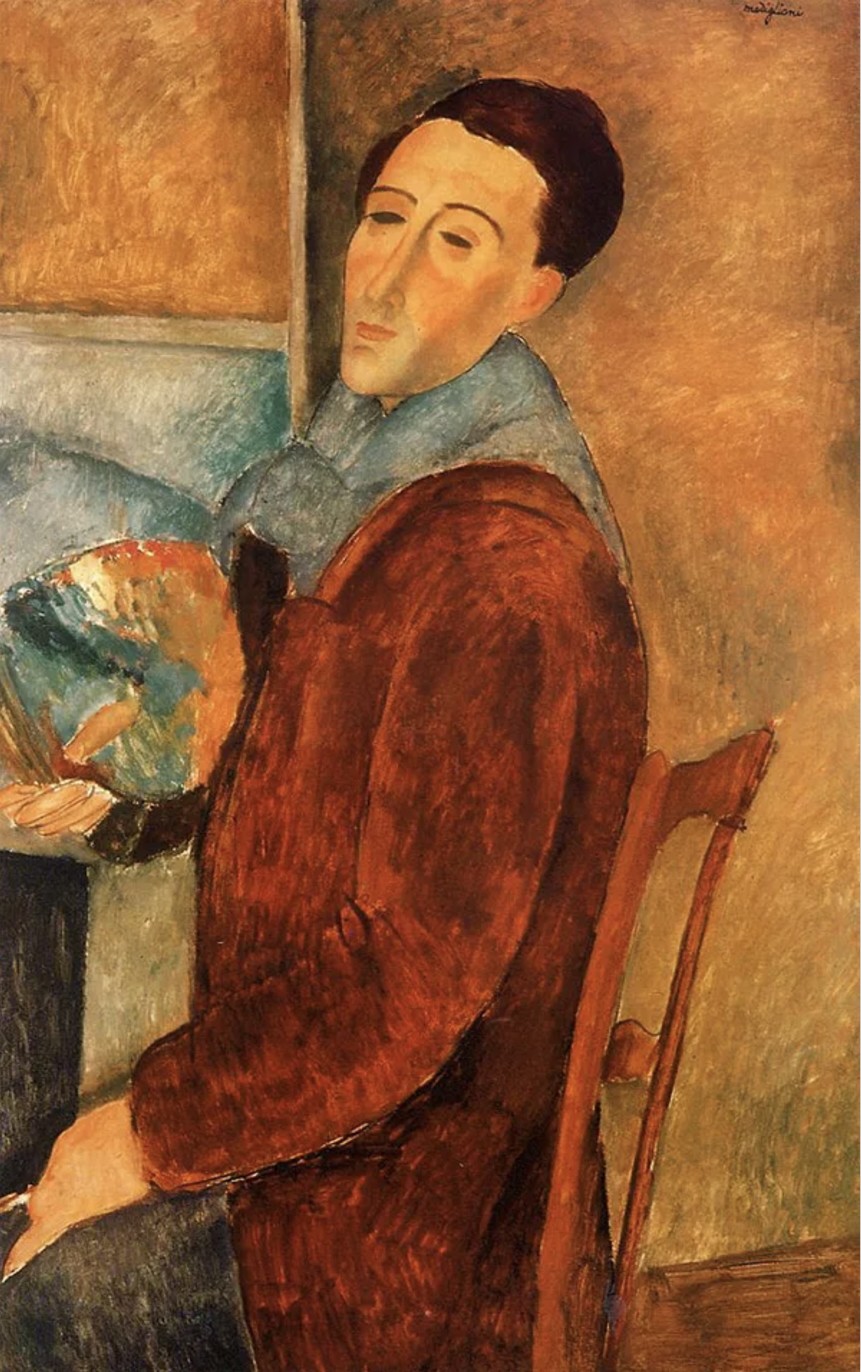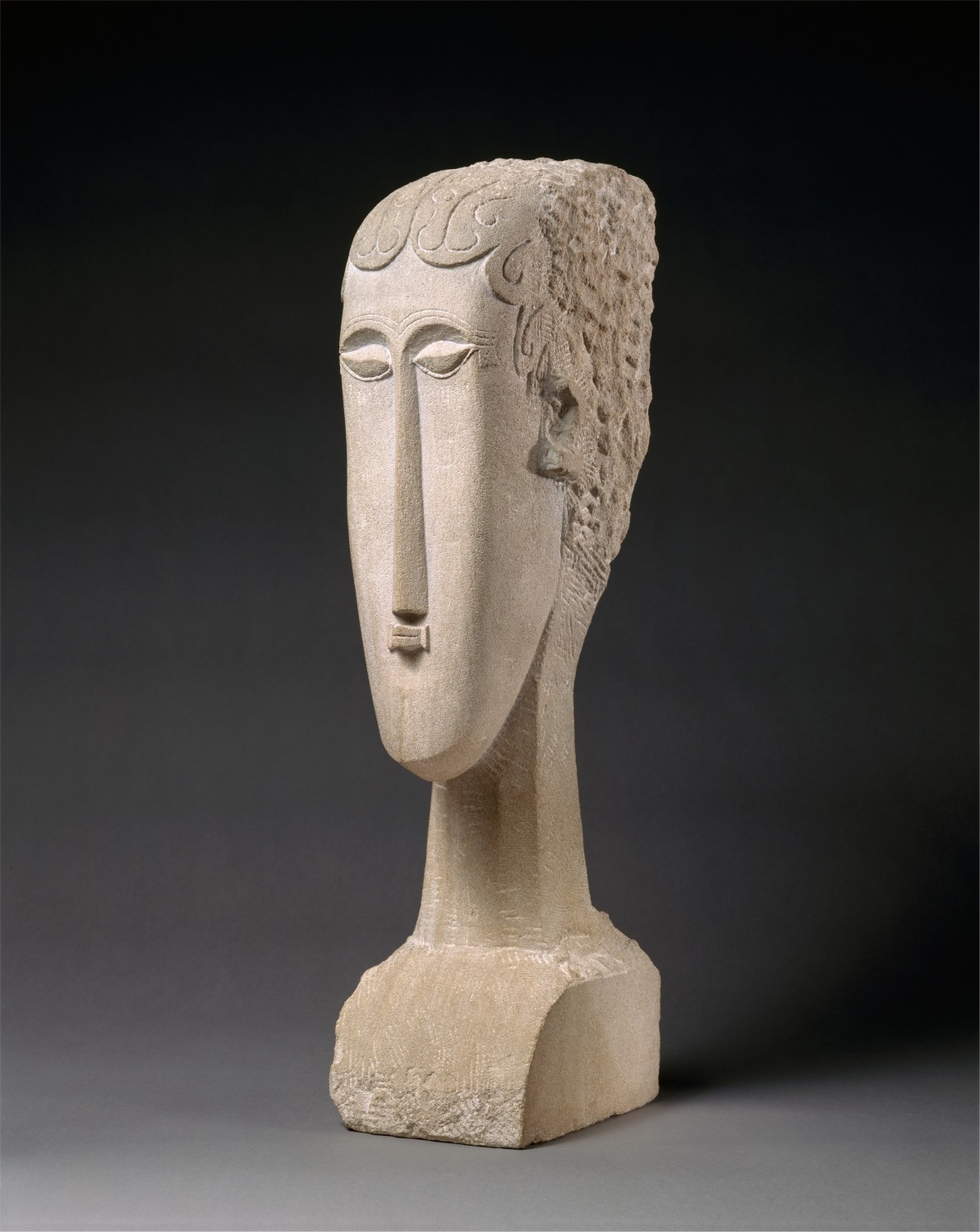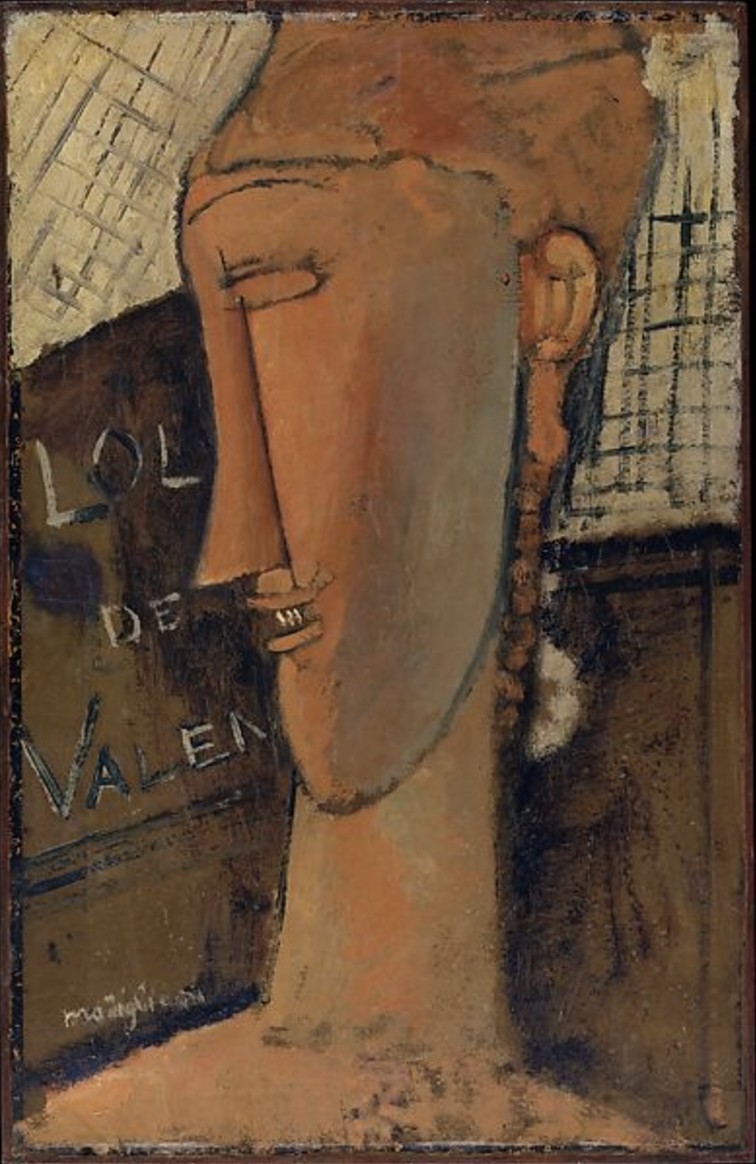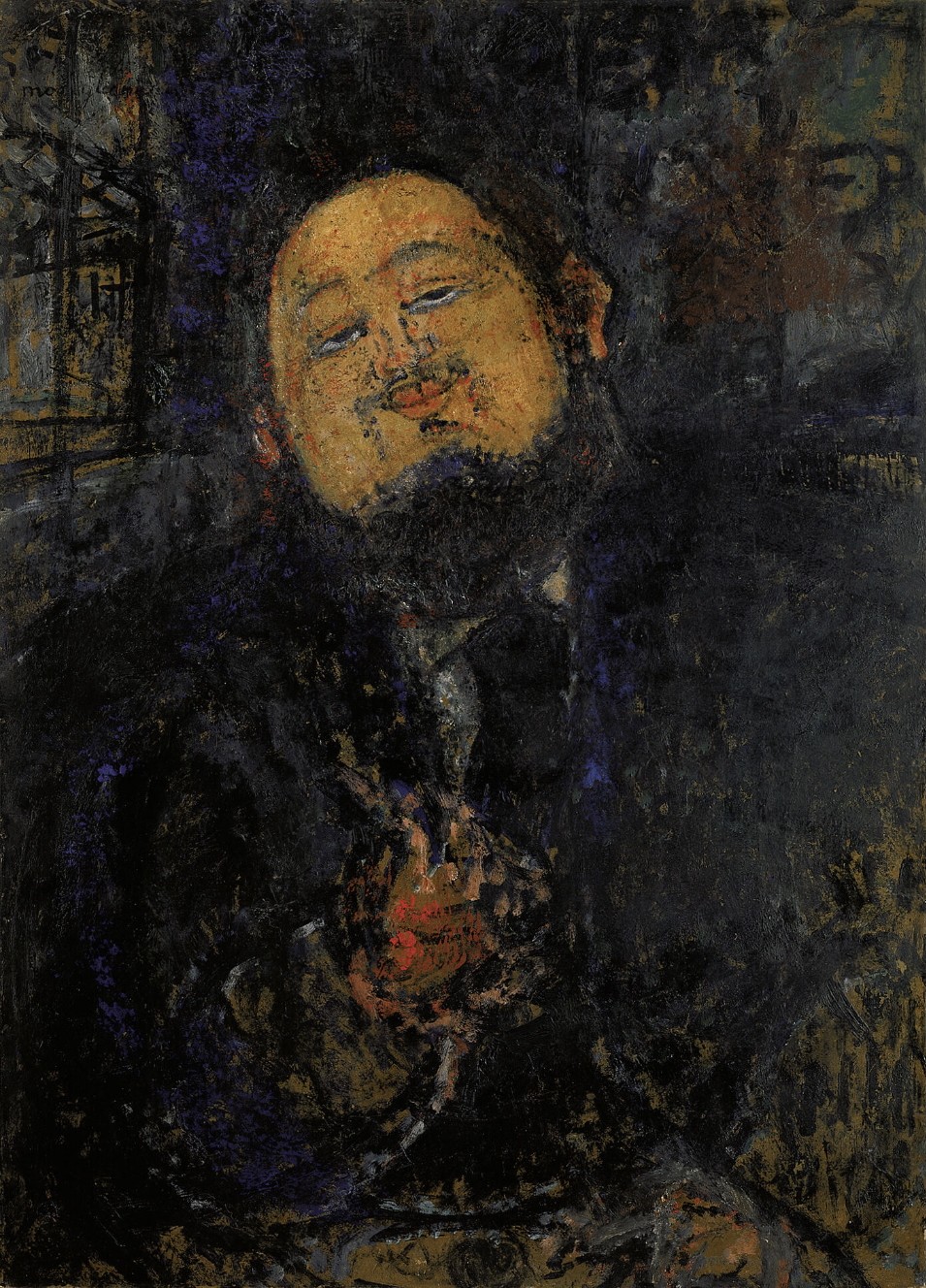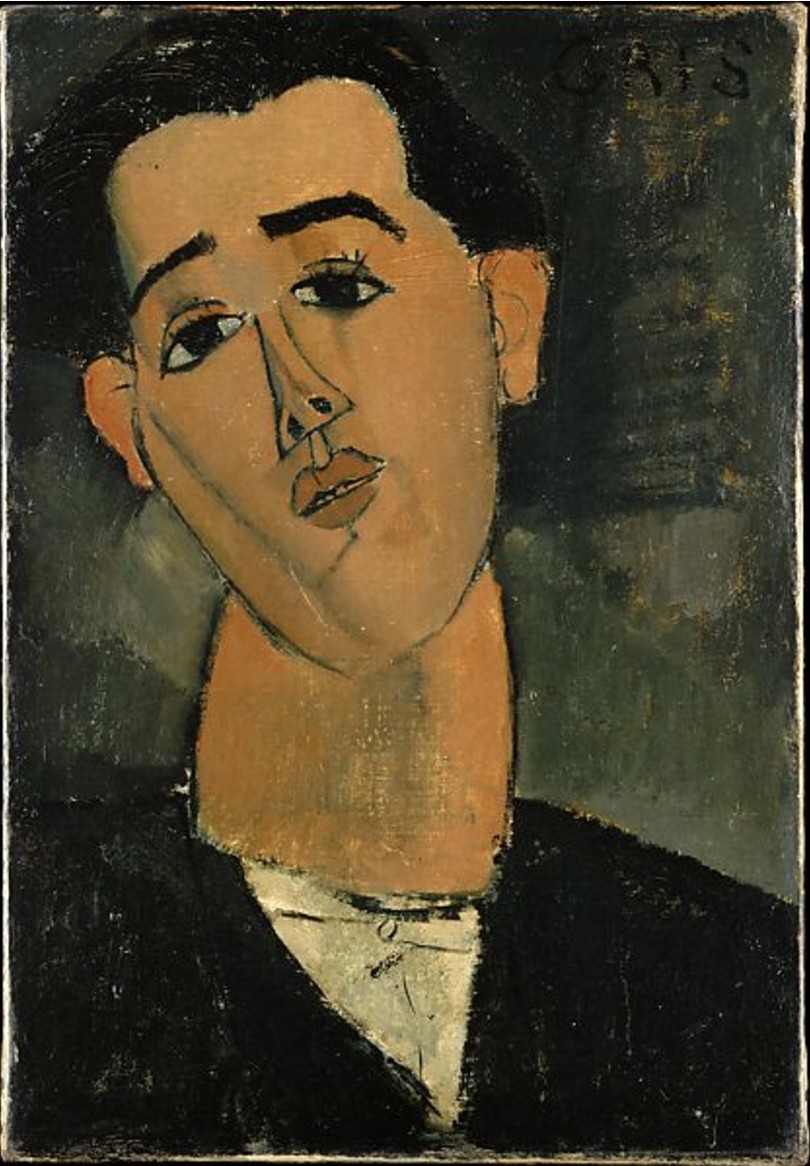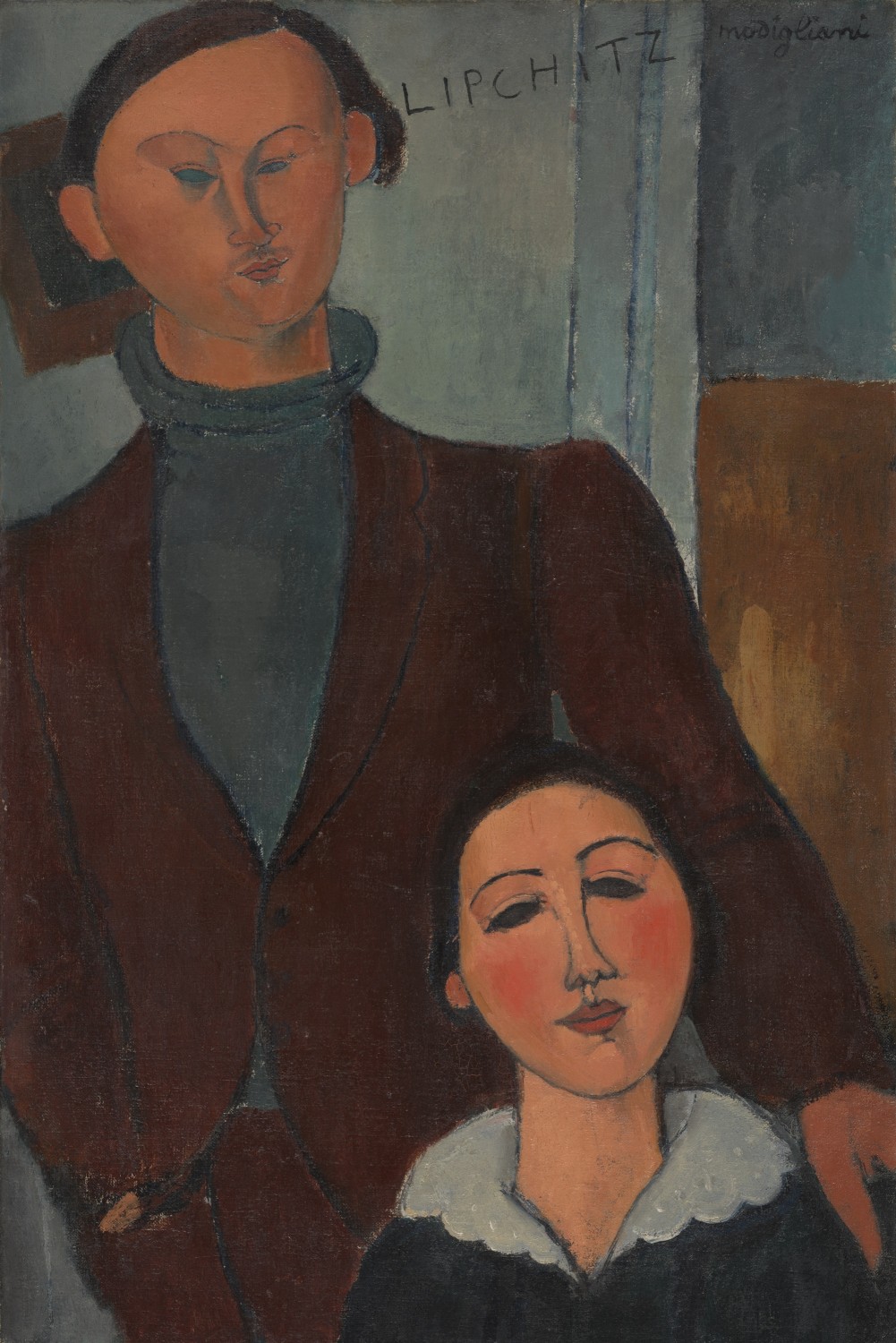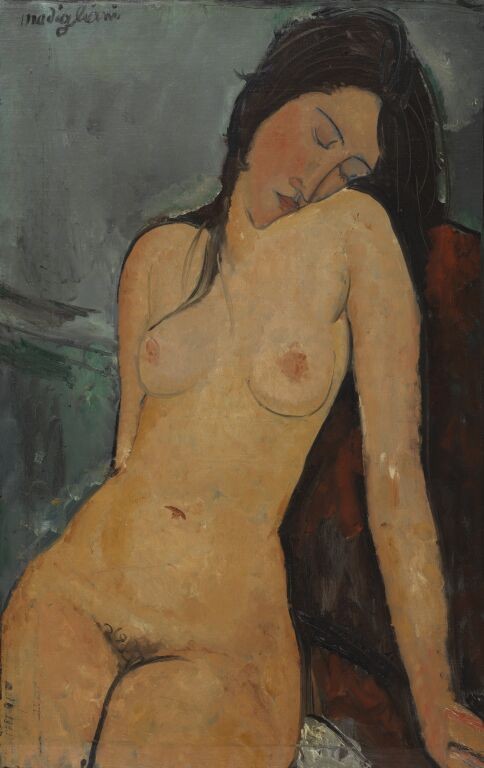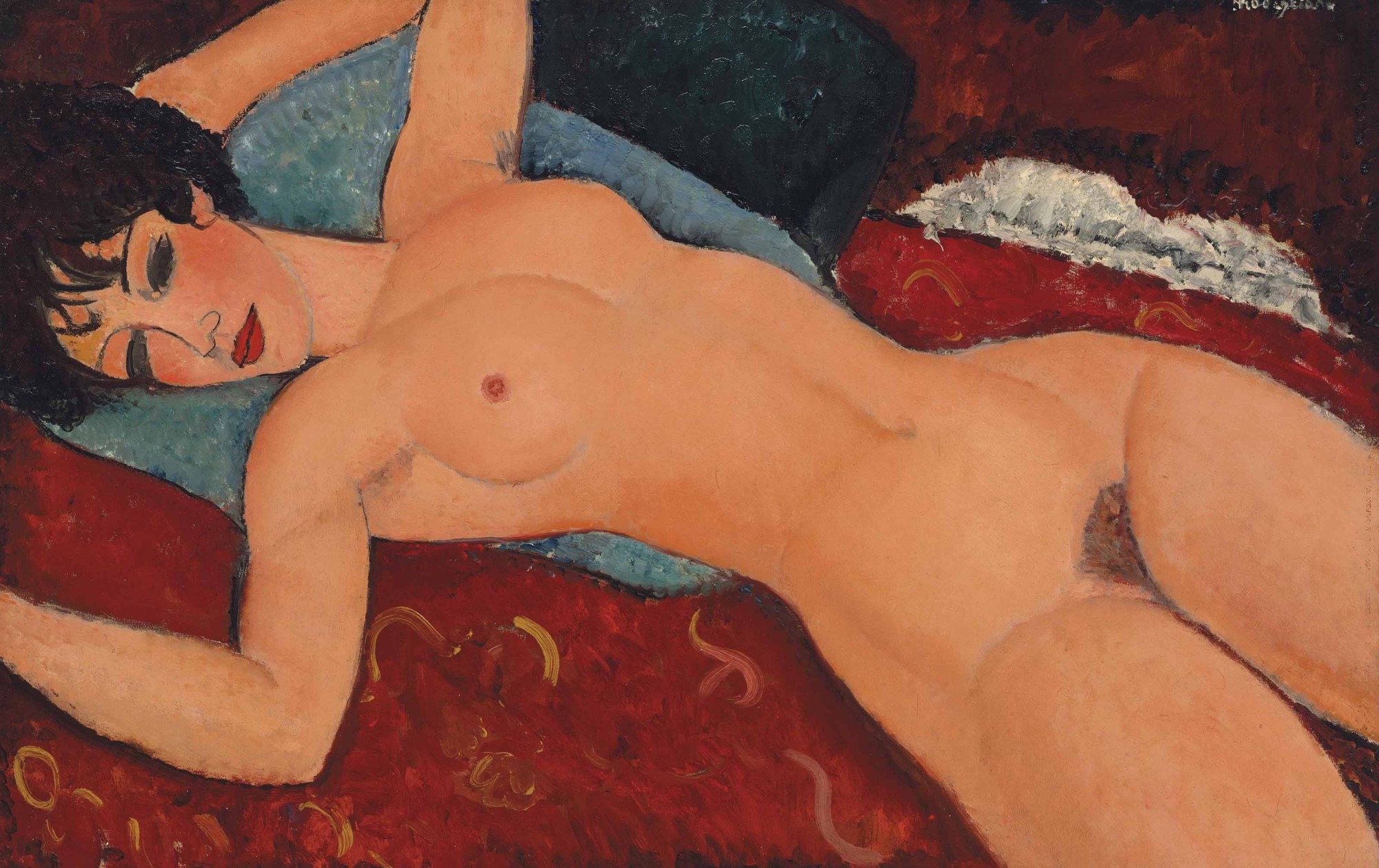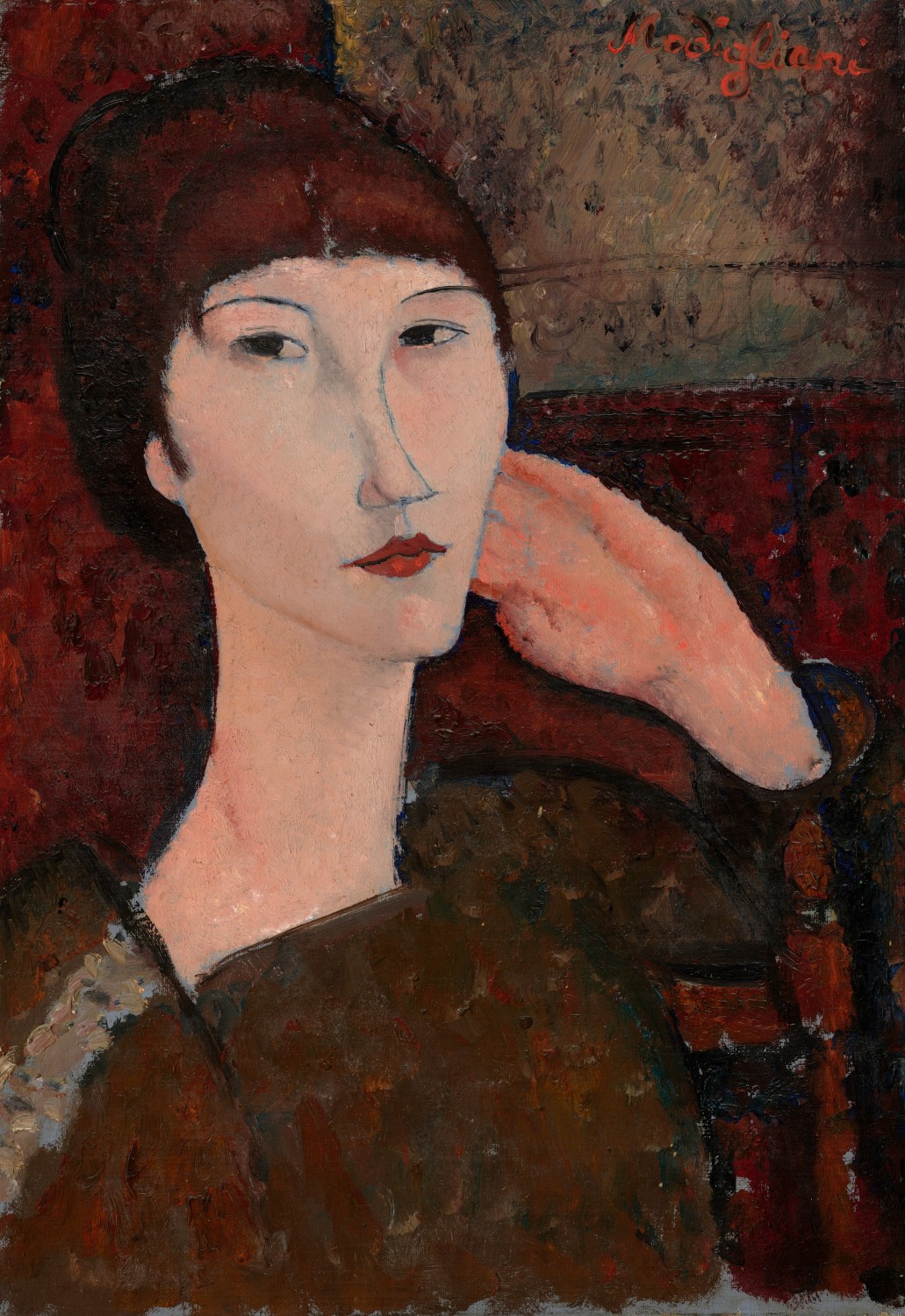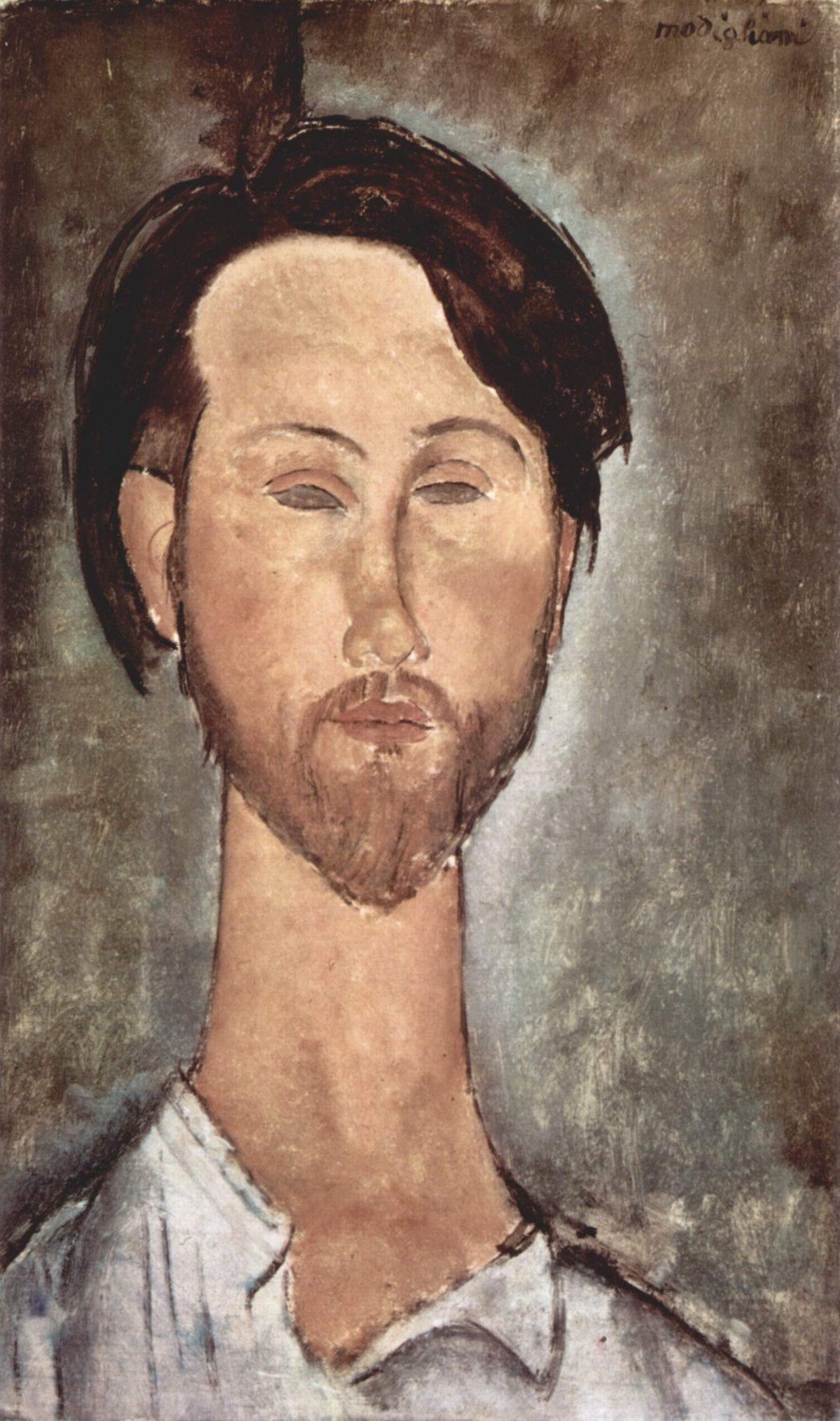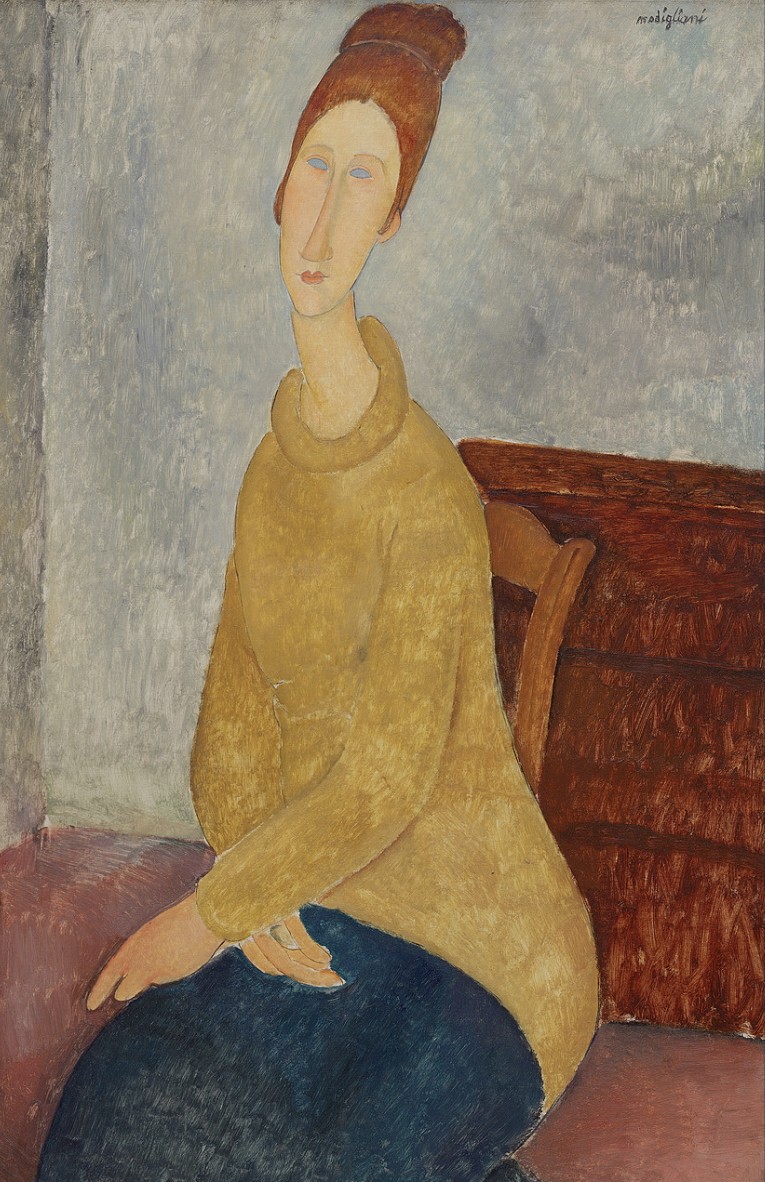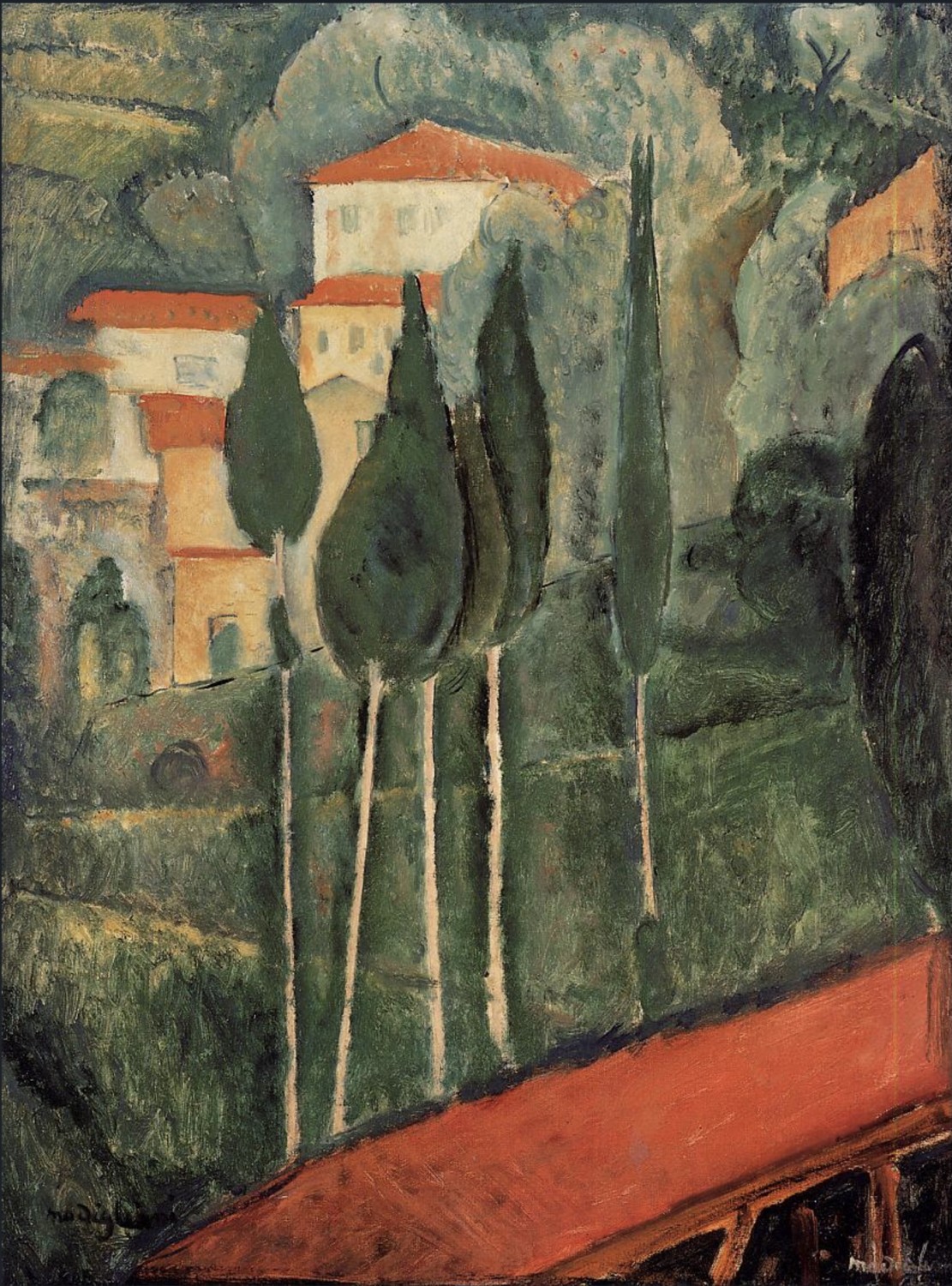Modigliani: Instinctive Mystery
By Laura Heyrman
“What I look for is neither reality nor unreality but the subconscious, the instinctive mystery of the human race.” – Amedeo Modigliani
Creator of works in a distinctive personal style, Amedeo Modigliani (Italian, 1884-1920) is known for his independence from the styles developing in early 20th century Paris. Though he was friends with many members of the movements of the day (Fauvism, Orphism, Cubism, and Surrealism), the artist chose to remain independent of these groups. Depending on the work under consideration, scholars and critics have discerned the influence of all of these movements in Modigliani’s work. Other influences apparent in his paintings and sculptures are Italian Renaissance art and the African sculptures and masks that were being imported into Europe at this time.
Modigliani was born into a Jewish family of French and Italian origin, once wealthy but financially strained from about the time of the artist’s birth onward. In spite of financial difficulties and her child’s poor health, his mother encouraged Modigliani in his artistic ambitions, helping him to travel to see museums throughout Italy and to find well-known artists with whom to study. His youthful reading of writers Friedrich Nietzsche, Charles Baudelaire, and the Comte de Lautrèamont and his studies of Renaissance and Modern Italian art paved the way for his later career. Unfortunately, he acquired some less helpful things in this period, including addictions to alcohol and drugs and the tuberculosis which would lead to his death at the age of 35.
In 1906, Modigliani moved from Italy to the center of the cultural avant-garde, Paris. There he met many members of the cultural vanguard; for a time he lived at Le Bateau-Lavoire in Montmartre, alongside Pablo Picasso and other impoverished artists. Later he joined in the avant-garde’s migration to Montparnasse. Modigliani again developed a reputation for excessive drinking and drug use. Some scholars have suggested that this was a means of treating his symptoms and perhaps was exaggerated by the artist to mask his illness. In France, tuberculosis had become the leading cause of death by 1900 and was feared as communicable disease without a cure. Many sufferers were ostracized and isolated, something which wouldn’t have suited the gregarious Modigliani who found camaraderie and inspiration in his associations with the Parisian art world.
In 1909, after meeting the Romanian-French sculptor Constantin Brâncuşi, Modigliani shifted his focus from painting to sculpture. For about 5 years, Modigliani worked with stone, carving a series of abstract heads and figures which were influenced by Brâncuşi, but which demonstrated Modigliani’s determination to walk his own stylistic path. Four of the artist’s Heads were exhibited in the Cubist section of the Salon d’Automne, an important exhibition in 1912. When the outbreak of World War 1 led to shortages of suitable materials and Modigliani’s deteriorating health made it difficult, he gave up sculpting in 1914. An example of the artist's sculpture appears in the slide show along with a painted variation on those sculpted heads, Lola de Valence, which depicts a 19th century Spanish dancer who was the subject of a poem by the Symbolist poet Baudelaire.
“When I know your soul, I will paint your eyes” – Modigliani
During the next few years, Modigliani painted portraits of his many friends and colleagues in the Parisian art world. I’ve included some of these in the slide show; the earliest included depicts Mexican muralist Diego Rivera and was painted in 1914. The style of this portrait indicates that Modigliani hadn’t yet worked out his mature style; the subject’s bright face and hands emerge from dark surroundings in a mix of Expressionism and Fauvism. Modigliani’s portrait of painter Juan Gris is closer to the artist’s recognizable style of long-necked figures with elongated faces bearing long noses and small mouths. However one key element is missing, the blank eyes that characterize most of the images of Modigliani’s last few years. Those appear in the portrait of sculptor Jacques Lipchitz and his new wife, poet Berthe Kitrosser, one of only 3 double portraits by Modigliani. Lipchitz commissioned the portrait from his friend in order to alleviate Modigliani’s poverty. The painter declared the work finished in 2 days but Lipchitz encouraged him to work on it for two more weeks to provide more funds for his friend.
Between 1916 and 1919, Modigliani painted dozens of nudes, which have become some of his best known paintings. These were commissioned by the artist’s friend and art dealer Léopold Zborowsky, who supplied the painter with his materials, hired models, and even gave his apartment as a studio. Unlike the many paintings which had originated in Modigliani’s circle of friends, this was a more “commercial” project, intended for sale, for Zborowsky’s personal collection, or to be included in gallery shows. The first and only solo exhibition of Modigliani’s work was held at the Berthe Weill Gallery in Paris. The exhibition was closed by the police on the first day due to accusations of obscenity, but this was apparently resolved by removing a nude from the gallery’s front window and the show continued. (Gallerist Berthe Weill is the subject of a current exhibition. See below for details.) One of Modigliani’s paintings from this series, Nu couché (Reclining Nude) set an auction record for a work by the artist when it sold for over 170 million dollars in 2015. During his lifetime, Modigliani sold some works but never for much money and what he earned soon disappeared to fund more art and his addictions.
In 1917, Modigliani met Jeanne Hèbuterne, an art student and model with whom he fell in love. In different settings and costumes, Hèbuterne became the artist’s favorite subject in the few years between their meeting and their deaths. In the first weeks of 1920, Modigliani’s health reached a crisis. Increasingly delirious, the artist was admitted to a hospital where he died of tubercular meningitis on January 24. Hèbuterne, pregnant and distraught, threw herself from a window on January 26, killing her unborn child and herself.
Though we appreciate the artist’s lifelong commitment to capturing both the individuality of his subject and the simplicity with which he gave form to the subconscious, it is Modigliani’s dramatic life story that has fascinated writers and filmmakers in the decades since his death. He has been the subject of nine novels, an equal or greater number of biographies, a play, a documentary, and three feature films, most recently Modi: Three Days on the Wing of Madness, directed by Johnny Depp. Scholarship on the artist has been lacking though, which with the high prices his works fetch at auction has led to extensive forgery of “Modiglianis.” The Modigliani Project (modiglianiproject.org) is currently at work on resolving some of these issues.
“With one eye you are looking at the outside world, while with the other you are looking within yourself.” – Modigliani
Make Way for Berthe Weill: Art Dealer of the Parisian Avant-Garde is at the Grey Art Museum of New York University, 19 Cooper Square, New York, New York, 10003 until March 1, 2025. LINK: greyartmuseum.nyu.edu/exhibition/berthe-weill The exhibition will open at the Montreal Museum of Fine Arts in Montreal, Quebec, Canada on May 10, 2025. LINK: mbam.qc.ca/en/exhibitions/berthe-weill
Please share your comments and questions on Substack. LINK irequireart.substack.com/p/viewing-room-29/comments
Longer captions may not be fully visible on smaller screens. We apologize for the inconvenience.
If a caption obscures part of the artwork, click on the image to turn off the caption.
